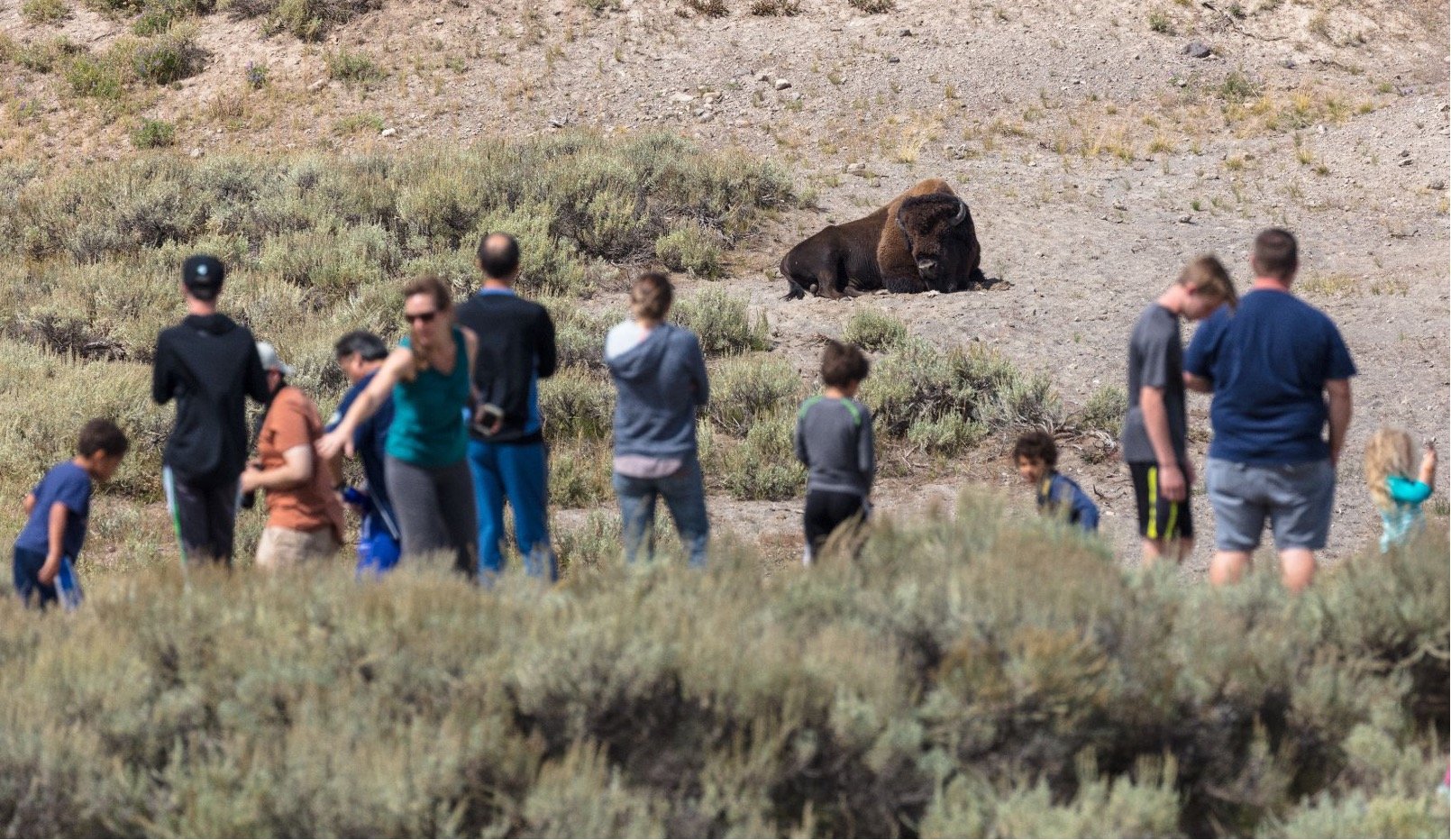National Park Visitors as a Funding Source for Cross-boundary and Landscape-Scale Wildlife Conservation
Image credit: Yellowstone National Park
Wildlife viewing is a popular activity for many visitors to national parks. Yet, many of the species that visitors want to see the most are wide-ranging and require large intact landscapes that span well beyond park boundaries for their survival. Areas outside of parks, like private working lands, are also the most susceptible to habitat loss and fragmentation due to land-use changes. Given the large visitation to national parks and the interest in wildlife viewing, national park visitors are a potential untapped source of funding for cross-boundary, landscape-scale conservation efforts. In this project, we wanted to understand the importance of wildlife viewing to national park visitors, how much they spend to visit national parks, and their support for hypothetical options for raising revenue to support landscape-scale conservation efforts.
In the summer of 2022, Hilary Byerly Flint and Drew Bennett led an effort that surveyed 991 visitors to Yellowstone and Grand Teton National Parks. We found that viewing wildlife was the primary reason to visit the parks for roughly 16% of visitors and one of several primary reasons for 62%. Only 3% said wildlife viewing was not a reason to visit. Overall, we estimated that wildlife viewing in these parks generates millions in net economic value and visitors support multiple options for contributing themselves towards large-landscape conservation, including conservation taxes and fees. Even the collection of modest fees could generate tens of millions of dollars in additional funds for conservation. Visitors to national parks are largely untapped sources of conservation funding and our results demonstrate how tapping into this funding could result in a potential win-win for wildlife viewers and conservation efforts beyond park boundaries.

